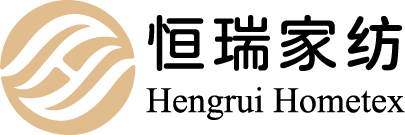Essential Insights into Baby Products: A Comprehensive Guide for New Parents
Release time:
Jun 26,2025
When it comes to baby products, the market offers an extensive range of items designed to support the needs of newborns, infants, and toddlers. Understanding the various categories can help parents prioritize what is truly essential.
**1. Clothing and Accessories**
One of the primary categories of baby products is clothing. Babies grow quickly, so selecting items made from soft, breathable materials is crucial. Look for clothing that offers easy access for diaper changes, such as onesies with snap closures. Accessories like hats, socks, and mittens are also important for regulating a baby's temperature, especially in the early months.
**2. Feeding Supplies**
Feeding is an integral part of a baby’s routine. For breastfeeding mothers, products like nursing pads, breast pumps, and nipple cream can provide comfort and convenience. If formula feeding, bottles, nipples, and sterilization equipment become essential baby products. As babies transition to solid foods, high chairs and baby utensils emerge as vital additions.
**3. Health and Safety Items**
Safety is a primary concern for new parents. Baby products in this category include items like baby monitors, outlet covers, and corner guards to create a safer environment. Health essentials such as thermometers, nasal aspirators, and first aid kits are also important for monitoring and managing a baby’s health.
**4. Diapering Needs**
Diapering is a significant part of a baby's daily routine. Parents should consider investing in a reliable changing table, diaper pails, and quality diapers—whether disposable or cloth. Wipes, creams for diaper rash, and portable changing mats can also enhance the diapering experience.
**5. Nursery Essentials**
Creating a comfortable nursery is vital for both the baby and the parents. Essential baby products include cribs, mattresses, and bedding. Additionally, items like humidifiers and white noise machines can help create a calming environment conducive to sleep.
**6. Toys and Developmental Products**
Appropriate toys play a crucial role in a baby’s development. Look for toys that are safe, non-toxic, and age-appropriate, focusing on those that stimulate sensory development and fine motor skills. Soft blocks, rattles, and teething toys fall into this category.
In conclusion, while the variety of baby products available can be daunting, focusing on fundamental needs can simplify the decision-making process. Prioritizing safety, comfort, and quality will help parents create a nurturing environment for their little ones. By understanding the different categories of baby products and their uses, parents can confidently equip themselves for this exciting journey of parenthood.
**1. Clothing and Accessories**
One of the primary categories of baby products is clothing. Babies grow quickly, so selecting items made from soft, breathable materials is crucial. Look for clothing that offers easy access for diaper changes, such as onesies with snap closures. Accessories like hats, socks, and mittens are also important for regulating a baby's temperature, especially in the early months.
**2. Feeding Supplies**
Feeding is an integral part of a baby’s routine. For breastfeeding mothers, products like nursing pads, breast pumps, and nipple cream can provide comfort and convenience. If formula feeding, bottles, nipples, and sterilization equipment become essential baby products. As babies transition to solid foods, high chairs and baby utensils emerge as vital additions.
**3. Health and Safety Items**
Safety is a primary concern for new parents. Baby products in this category include items like baby monitors, outlet covers, and corner guards to create a safer environment. Health essentials such as thermometers, nasal aspirators, and first aid kits are also important for monitoring and managing a baby’s health.
**4. Diapering Needs**
Diapering is a significant part of a baby's daily routine. Parents should consider investing in a reliable changing table, diaper pails, and quality diapers—whether disposable or cloth. Wipes, creams for diaper rash, and portable changing mats can also enhance the diapering experience.
**5. Nursery Essentials**
Creating a comfortable nursery is vital for both the baby and the parents. Essential baby products include cribs, mattresses, and bedding. Additionally, items like humidifiers and white noise machines can help create a calming environment conducive to sleep.
**6. Toys and Developmental Products**
Appropriate toys play a crucial role in a baby’s development. Look for toys that are safe, non-toxic, and age-appropriate, focusing on those that stimulate sensory development and fine motor skills. Soft blocks, rattles, and teething toys fall into this category.
In conclusion, while the variety of baby products available can be daunting, focusing on fundamental needs can simplify the decision-making process. Prioritizing safety, comfort, and quality will help parents create a nurturing environment for their little ones. By understanding the different categories of baby products and their uses, parents can confidently equip themselves for this exciting journey of parenthood.











